May 23, 2022 @ 16:00 – June 4, 2022 @ 17:00
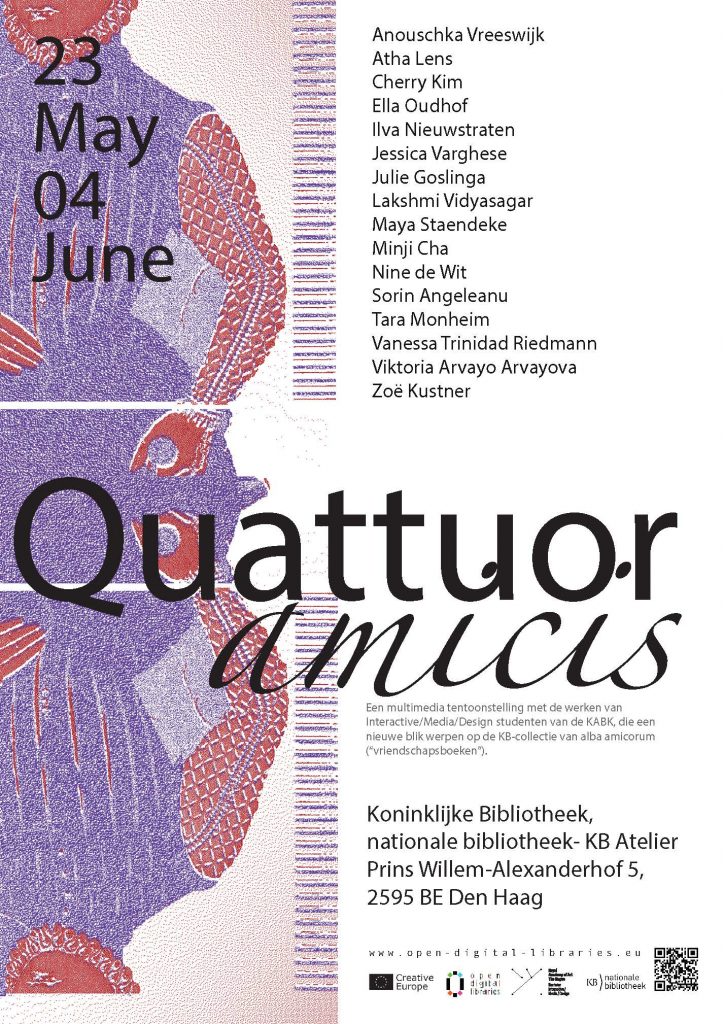
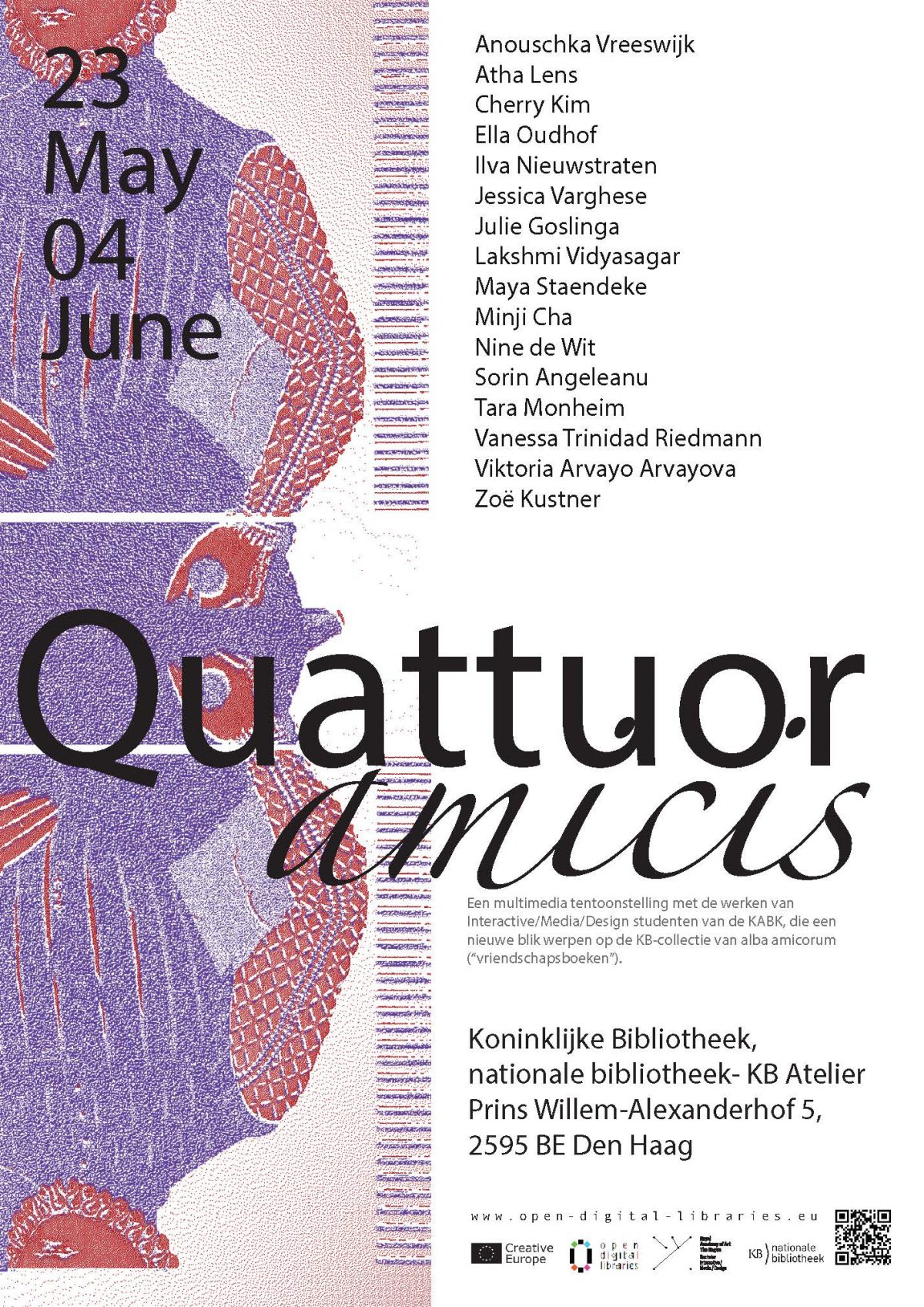

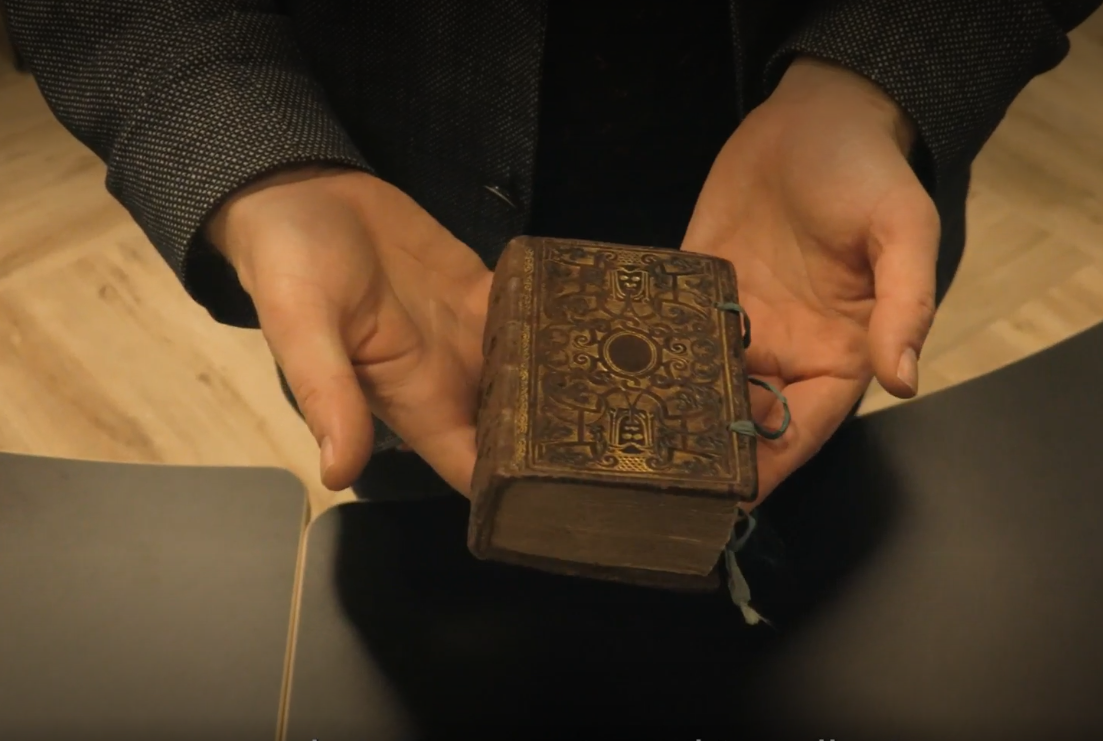
A collaboration between the National Library of the Netherlands (KB) and the Royal Academy of Art (KAKB), The Hague.
15 graduating students of the Interior Architecture and Furniture Design department developed interactive spatial experiences for the visitors of the KB by exploring the unique collection of the alba amicorum, the friendship books from the 16th century and beyond, which can be seen as predecessors of today’s social media.
Film credits: Medina Resic
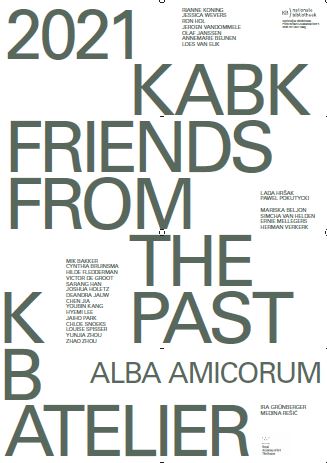
This poster is one of the deliverables of the project with the IAFD students. All 5 projects are summarized in this poster. Credits for the production of this leaflet goes to: Tariq Heijboer & Anne van den Dool, commissioned by the National Library of The Netherlands (KB).
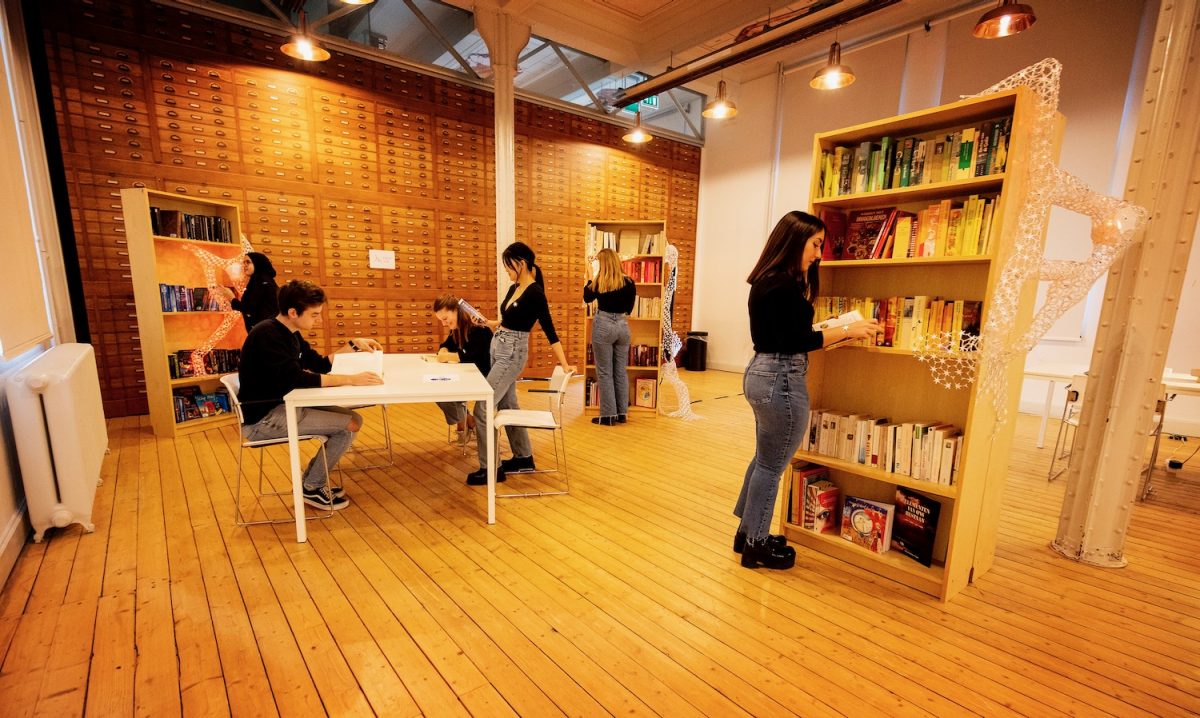
The «Roots» concept envisions that the digital collection actually overgrows the physical books and furniture in the library. A library visitor can easily bump into data from the growing digital collection and become inspired in the same way as if they were browsing the physical versions of the books.
Student team: Agnes Lee, Anna Belenguer Martí, Lonneke Visser, Meryem Maskouri, Nathan Douenburg, Pien Adank
In the 2021-2022 edition of the Interactive Environments minor they collaborated with the KB National Library to develop 5 concepts as an answer to the following design brief.
Traditionally, libraries are strongholds for people who enjoy consuming tangible content. However nowadays, more and more content is being published digitally and analogue collections are being digitalised. And thus, the question arises: how can libraries adapt and thrive in the future, while also bridging the gap between their physical and digital collections and spaces?
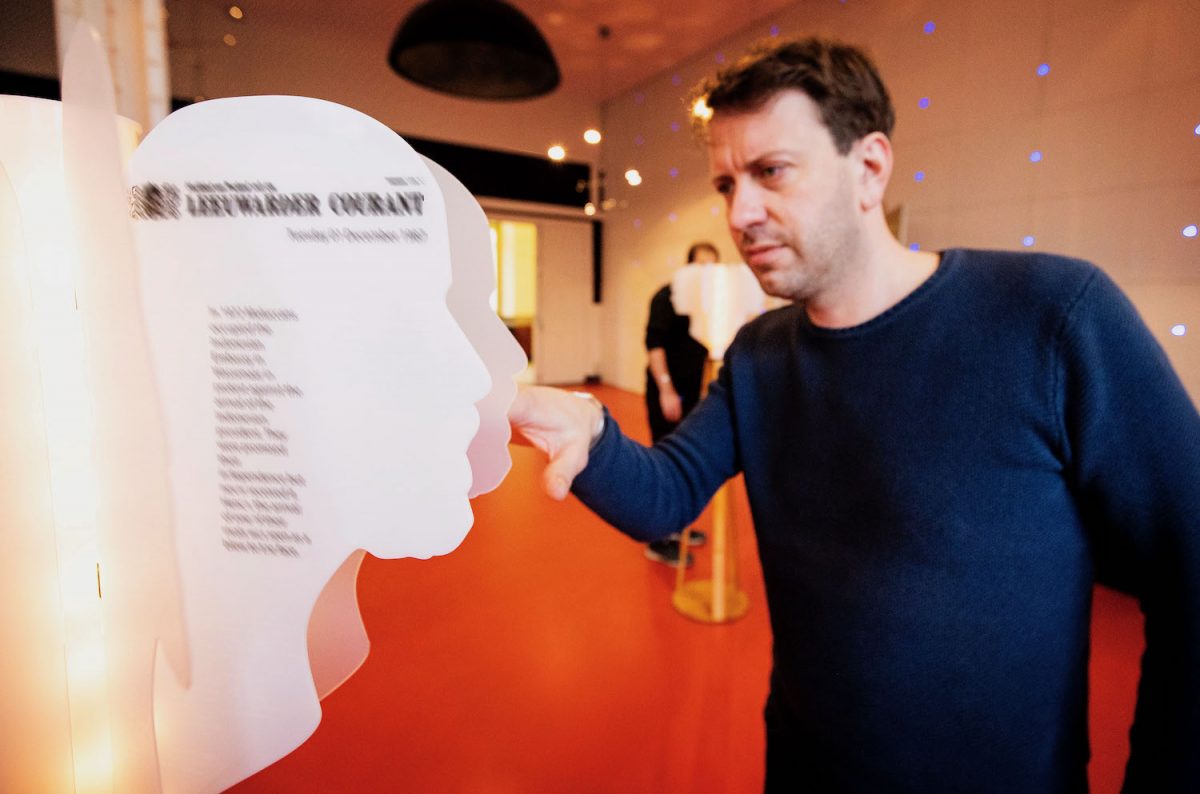
The «Haagse Bakjes» concept exposes a fundamental role of the library. That of being a neutral space where all opinions and viewpoints are archived, but readily available. Situated near the coffee machine the concept highlights one topic, but offers an environment of perspectives for reading and discussing while people enjoy a coffee break.
Student team: Isabella Boezel, Kathleen Panariti, Levie van der Heijde, Nova Meijer, Sonia Alarcon Segarra
In the 2021-2022 edition of the Interactive Environments minor they collaborated with the KB National Library to develop 5 concepts as an answer to the following design brief. Traditionally, libraries are strongholds for people who enjoy consuming tangible content. However nowadays, more and more content is being published digitally and analogue collections are being digitalised. And thus, the question arises: how can libraries adapt and thrive in the future, while also bridging the gap between their physical and digital collections and spaces?
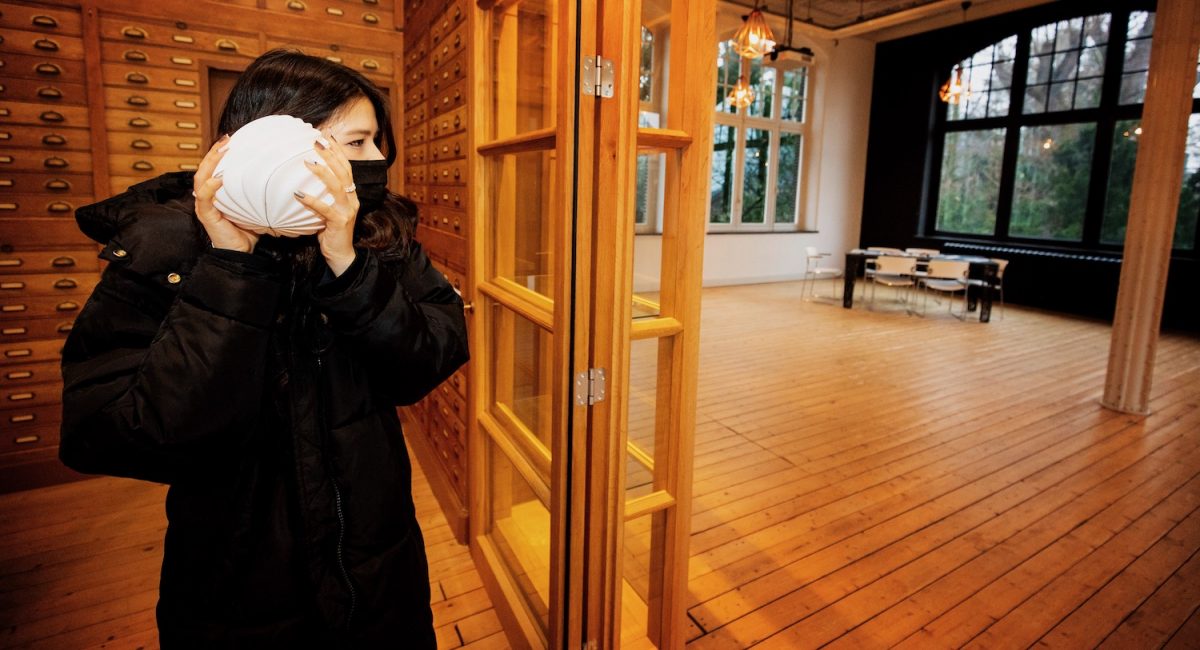
The MEMO concept aims to attract interest for the library through examples. A visitor can pick up an audio playback shell at the entrance and walk through the library tuning in to several stories as told by the voices of another visitor. The stories relate to personal experiences with the library.
Student team: Isa van Gameren, Katarina Pinto, Loïs Epskamp, Nadyne Aretz, Shiva Aghaei, Sijmen de Vries
In the 2021-2022 edition of the Interactive Environments minor they collaborated with the KB National Library to develop 5 concepts as an answer to the following design brief. Traditionally, libraries are strongholds for people who enjoy consuming tangible content. However nowadays, more and more content is being published digitally and analogue collections are being digitalised. And thus, the question arises: how can libraries adapt and thrive in the future, while also bridging the gap between their physical and digital collections and spaces?